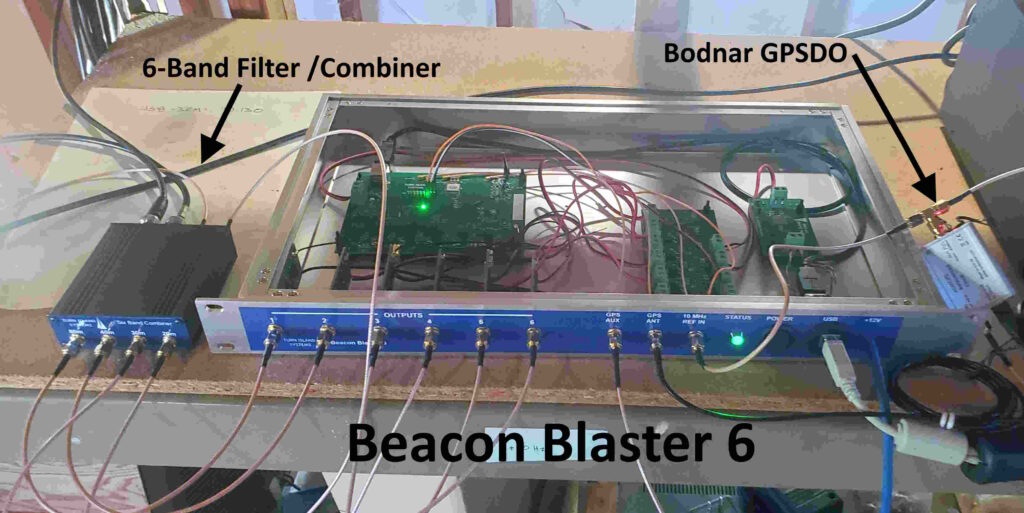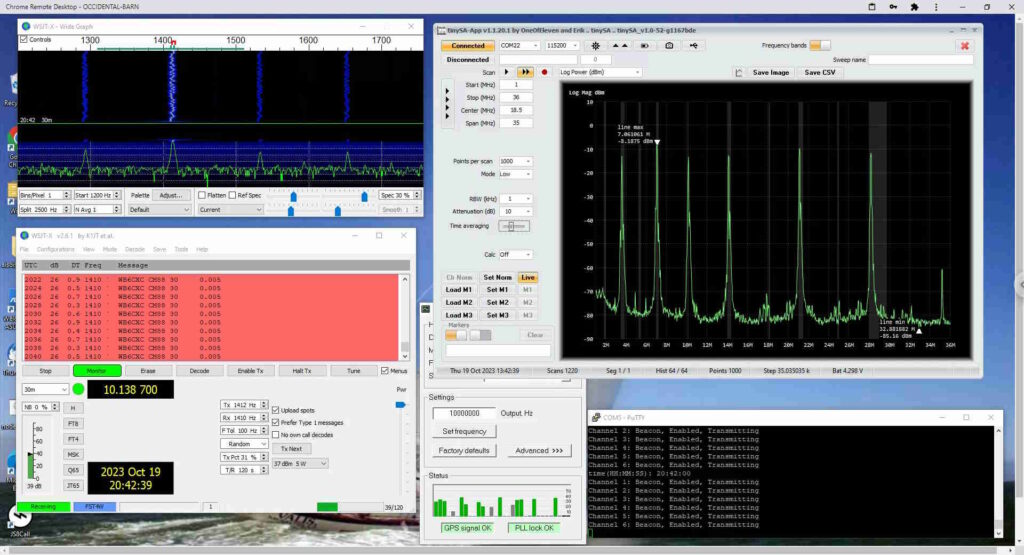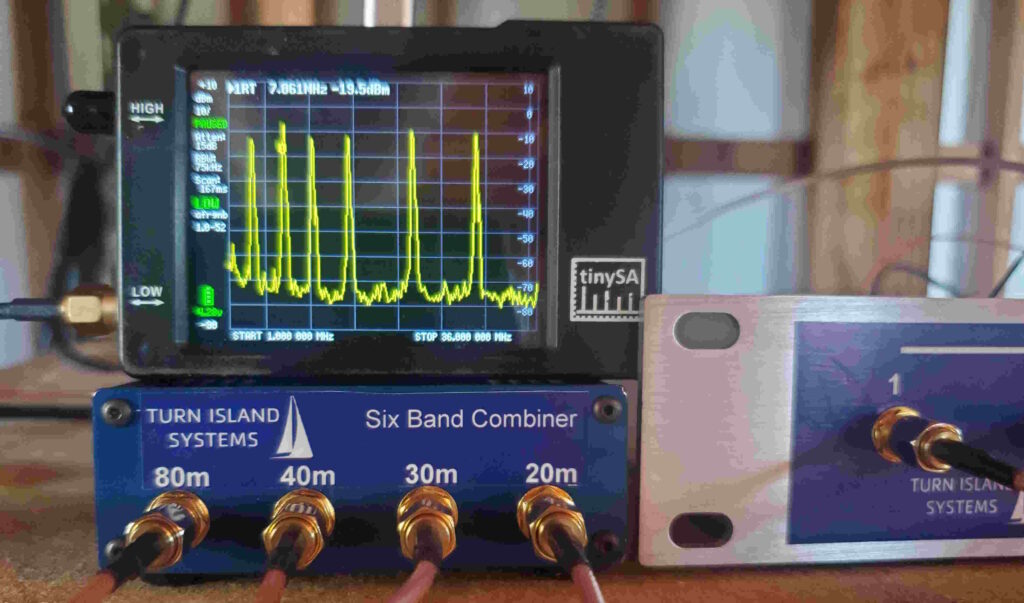We’ve had at least five Beacon Blaster 6 boxes running during last week’s solar eclipse (plus another custom beacon design that used the BB-6 motherboard.) A lot of good propagation data was captured using these and other beacons.
I’ve got two BB-6 prototypes running, one in Friday Harbor Washington (WB6CXC, Grid CN88) and another in Occidental California (WB6CXC, Grid CM88). These were both transmitting on 80, 40, 30, 20, 15, and 10 meters, connected through a prototype Six-Band Filter/Combiner.
Here’s the setup in Occidental:

Prior to the eclipse, in order to verify the BB-6 “baseline” performance I set up a little monitoring system. This way we can confirm the validity of remote measurements of frequency, amplitude, or spread.
To do this I used a QRP-Labs “QDX” transceiver, running as a receiver on the 20 meter band. Some external shielding and cable-clamp chokes were needed to attenuate the strong local signal, as even with a dummy-load in the QDX antenna jack the receiver was initially overloading. The QDX was then connected to a computer running the wsjtx program to decode my FST4W-120 transmissions. wsjtx saves a log file showing the time-stamped parameters of every decoded transmission.
For additional monitoring the “-40 dB Tap” output of the Combiner was connected to a spectrum analyzer, which was also plugged into the computer. I first used a “SignalHound SA-44B” analyzer, but wanting to free up that device for other measurements I switched to the amazing “tinySA” (which also has an available computer interface program.)
The Bodnar GPSDO which provides the 10 MHz clock to both the BB-6 and the QDX has a monitoring program that displays internal PLL and GPS satellite status — this was also on the screen.
Finally, the BB-6 USB serial port was connected to the “Putty” terminal emulator. Here’s how it looked:

Here’s the tinySA in action:

The BB-6 performed flawlessly!
